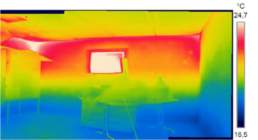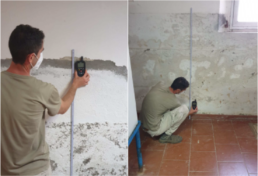THERMOGRAPHIC ANALYSIS
Supervised and coordinated by:
Geolog. Manuel Pelliccia
Thermographic operator - certificate LEVEL 2(*)
(*) NON-DESTRUCTIVE TESTING IN THE INFRARED (TT) METHOD IN ACCORDANCE WITHUNI EN ISO 9712:2012 REGOLAMENTO RINA RC/C14 – MAT. 19VE00376PN10;
ITC (Infrared Training Center) UNI ISO 18436-7 – MAT. 2019IT16N010.
Thermographic Analysis
Infrared (IR) thermography is a nondestructive diagnostic technique that, by measuring the infrared radiation of an object, is able to determine its surface temperature. The analysis is performed with an infrared camera, a device of equipment that captures a thermal image of the object's surface without requiring any contact with the object.
The operation of the thermal imaging camera is based on the ability of objects to absorb and release heat. The instrument generates maps in different colors that associate a detected temperature with a corresponding color.
Fields
- Cultural Heritage
- Process control
- Ecology
- Construction
- Electrical
- Energy
- Geology
- Industrial plants
- Maintenance
- Heating
Fields of Application
The following is a summary of the fields of application of thermographic analysis we are concerned with:
- Prevention of risks from electrical installations.
- Localization of infiltrations and thermal bridges.
- Detection of infiltrations.
- Detection of dew points for mold prevention.
- Detection of piping routes of water systems.
- Verification of heating system efficiency with detection of any thermal efficiency decay traits.
- Thermographic audits of building thermal performance and qualitative assessment of buildings.
- Thermographic analysis to support the preparation of building energy certifications.
- Analysis of cracking phenomena below masonry coatings and plasters with localization of detachment of masonry coatings and plasters.
- Verification of floor slab displacement.
Benefits for companies
- Non-invasive testing
- No interruption of activities carried out in the buildings during the execution of tests
- Increased safety in case of short circuits
- Lower maintenance costs
- Lower insurance costs: discounts on insurance premiums in case of fire insurance
Our Analyses
The following is the result of our analysis performed following the reference standard UNI EN 13187:2000 "Qualitative detection of thermal irregularities in building envelopes - Infrared method"


